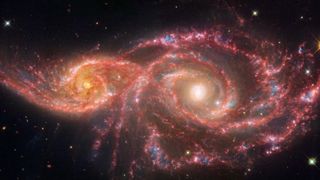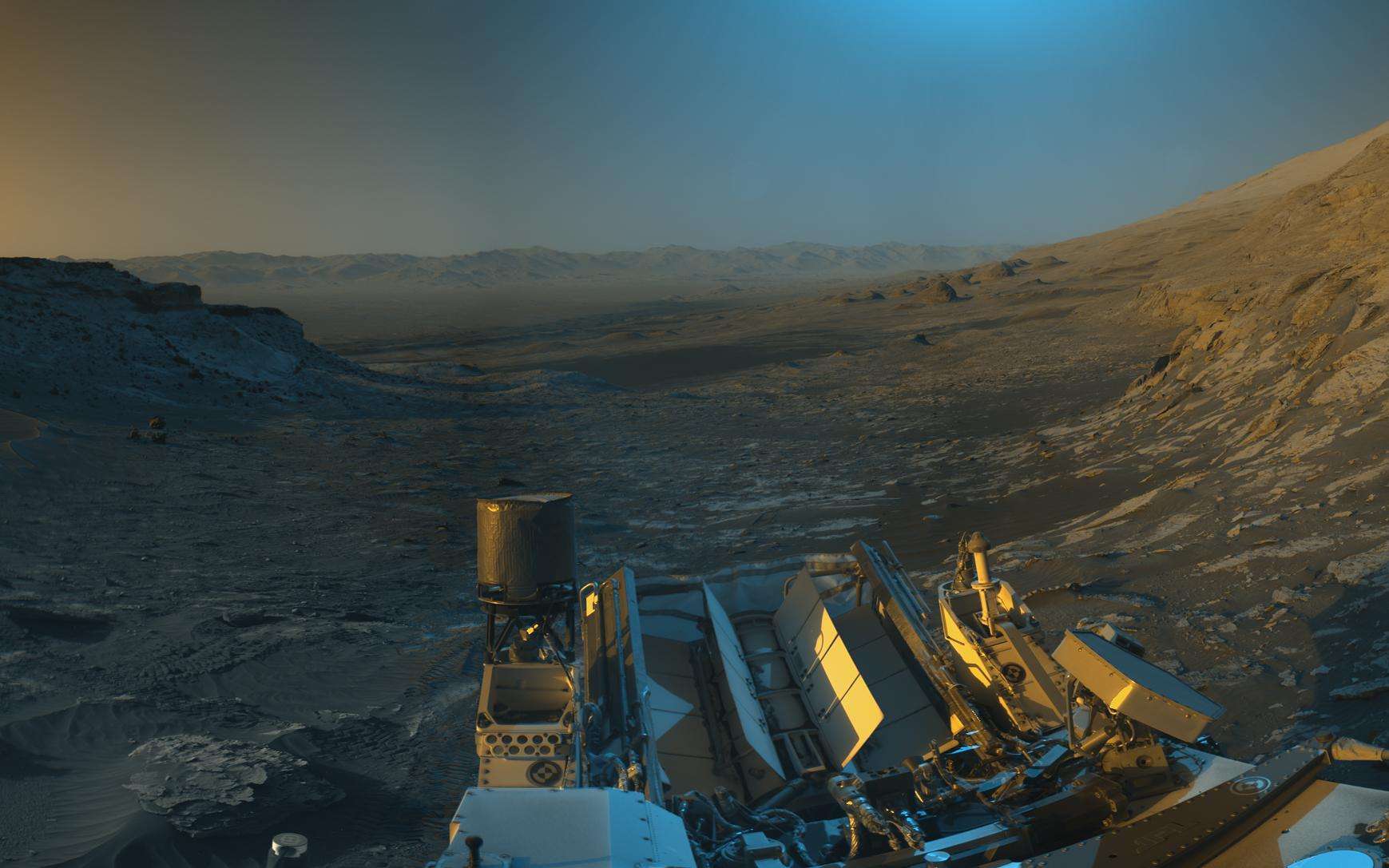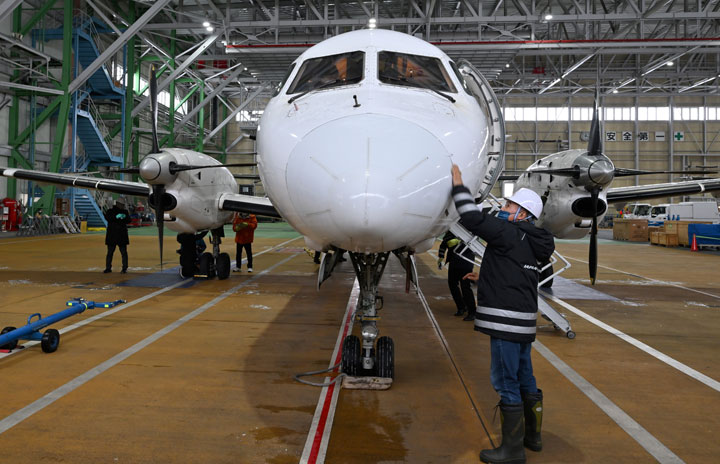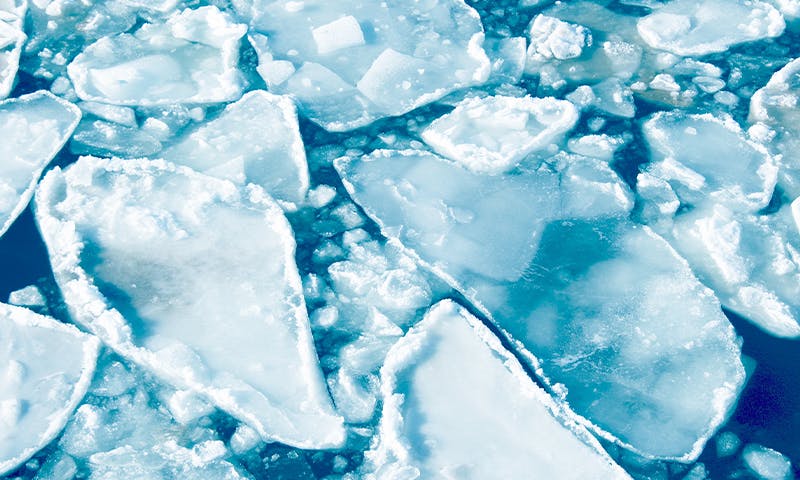
(Image credit: NASA, ESA, CSA, STScI)
What it is: The spiral galaxies IC 2163 (left) and NGC 2207 (right)
Where it is: 80 million light-years away, in the constellation Canis Major
When it was shared: Oct. 31, 2024
Why it’s so special: This eerie scene, a composite of images captured by both the James Webb Space Telescope (JWST) and the Hubble Space Telescope, features a pair of spiral galaxies with bright cores that resemble a spooky set of “blood-soaked” eyes. These galaxies grazed each other millions of years ago and are currently colliding.
That’s because millions of years ago, the smaller spiral galaxy on the left, IC 2163, slowly crept behind the larger spiral galaxy on the right, NGC 2207. Because of their close encounter, the galaxies’ spiral arms may have developed tiny, tail-like extensions, both between IC 2163’s core and its far left arm and between the two galaxies’ bright cores. Another similar extension stretches from the top of the larger spiral, which is drifting away from the eerie scene.
The two galaxies’ materials may have also collided during the graze, which might explain the thick and bulging arms, including the “eyelid” regions, highlighted in bright red.
Related: 42 jaw-dropping James Webb Space Telescope images
Both galaxies are efficient star factories, producing nearly two dozen new sunlike stars each year. This star formation rate is much higher than that of the Milky Way, which produces only two or three new sunlike stars annually. And while our galaxy produces one supernova every 50 years, both of these galaxies have hosted seven known supernovas in recent decades. These supernovas may have fueled new star formation by clearing out space in the galaxy’s spiral arms, thus redistributing gas and dust. Once the material cooled down, new stars could form.
This incredibly detailed image combines mid-infrared observations from JWST with ultraviolet and visible-light observations from Hubble.
The star-forming regions scattered throughout the spiral arms are represented in bright blue in the Hubble data and in pink and white in the JWST data. The areas with large groups of stars are super star clusters. Some of the bright regions might also be mini-starbursts, in which stars form at an exceptionally high rate.
What’s next? Over the course of millions of years, the orbits of these galaxies will become tighter, and they will continue to swing past each other in a spectacular cosmic dance. As they inch closer to each other, they will merge into a single galaxy with reshaped arms and a single brighter core. Finally, in the next billion years or so, this eerie scene will have a single “eye.”
For more sublime space images, check out our Space Photo of the Week archives.
Note: This article have been indexed to our site. We do not claim legitimacy, ownership or copyright of any of the content above. To see the article at original source Click Here













